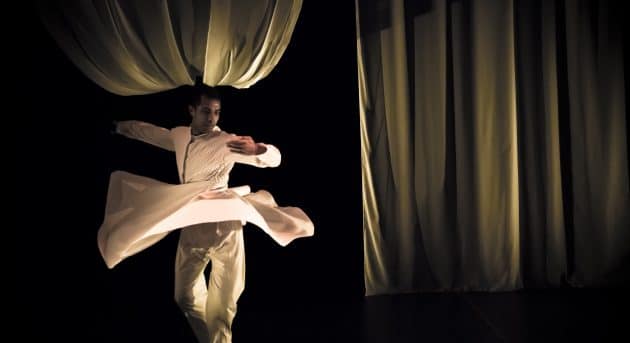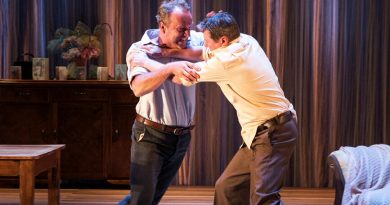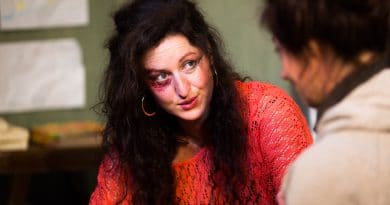Review: Tukre’, Riverside, Parramatta
Raghav Handa shines both as choreographer and performer in Tukre’, an extraordinary solo work. As the piece unfolds, he explores, questions and embraces multiple layers of his identity.
Inspired by his Indian family heritage, he brings together Kathak dance from Northern India and modern contemporary dance. A note in the program explains that his ancestors were jewellery makers, and that his choreography begins with the movements they made while working with gems or metal.
The precision and economy of those gestures can be clearly seen in the early segments of the performance, conveying the jewellers’ years of repetition, the muscle memory so deep that the body becomes almost machine-like. But what a beautiful machine!
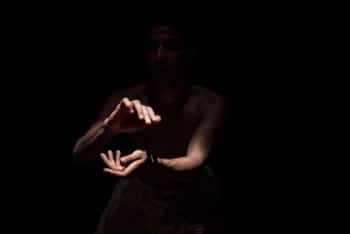
The rhythmic, tightly controlled gestures alternate with segments of flowing, supple movement. One sequence focuses just on the dancer’s two hands, liquidly chasing each other in beams of light that shine across the performance space. Their melting insubstantiality contrasts with the perfectly rigid fingers of other sections of the performance. Another section—clearly paying tribute to the Kathak style—has Handa turning in tight, fast circles, the skirt of his white costume floating and twirling around him, with an effect that is both exhilarating and strangely melancholy.
The entire performance uses contrasts to give structure, texture and balance. The piece opens in darkness as Handa lights a candle—an everyday ritual, performed all over India. Then there are the contasts of movement and stillness, sound and silence. Much of the movement is highly stylized, but there are moments of casual, “normal” walking.
Each sequence is beautiful, with Handa’s movements and muscles defined and enhanced by lighting by Clytie Smith. The musical score by Lachlan Bostock includes cello and rhythmic sounds which I couldn’t identify but which work exceptionally well with the smoky, cross-lit atmosphere.
Nevertheless, amid the exquisite, abstract movement, I began to wonder how everything connected to the ancestral jewellery makers. What happens next is gentle but emotionally resonant.
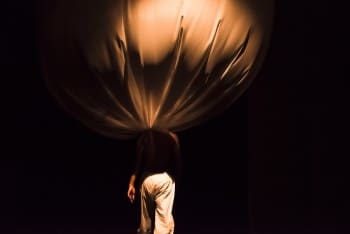
The modulations between stylization and “natural” create a space for non-dance insertions, allowing Handa to hold an on-going “conversation” with filmed clips of his mother, projected onto a panel of sheer fabric.
They discuss the extravagant jewellery that was part of her dowry. She shows him—and us—a heavy diamond-encrusted necklace/earring/ring set, and wedding photographs in which she is laden with these jewels. She tells Handa that she will give the family treasure to his bride when he marries. He replies to her that, as a gay man, that will not be possible.
It almost seems like a throw-away line at that point, but the conclusion of the piece—with Handa wearing the necklace himself—is powerful and moving.
He is completely still, facing the audience, his eyes connecting with ours. It becomes a stunning embodiment of acceptance—of his Indian heritage, of his identity as a gay Australian man, of his family. And—perhaps—of their acceptance of him.
He holds this profound, silent moment for a long time, the audience just as silent and still.
This simultaneously delicate and robust piece is multi-layered and complex. It nourishes the soul.

